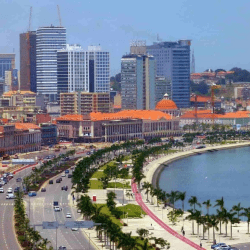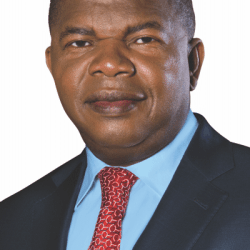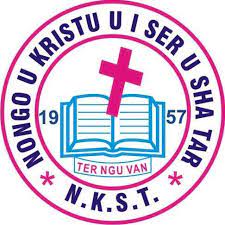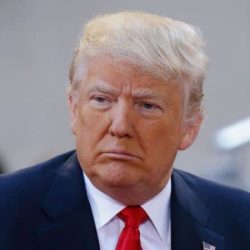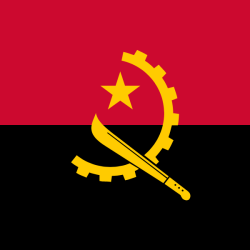João Manuel Gonçalves Lourenço is the third President of Angola.

He was installed on Sep 26, 2017 after winning election.
In 2012, Angola held its third election, won again by the MPLA and its candidate, José Eduardo dos Santos.
In 2017, in Angola’s fourth multiparty elections, it presented for the first time a candidate other than José Eduardo dos Santos, who had voluntarily announced such a decision earlier that year.
João Manuel Gonçalves Lourenço ran and won, who thus became the third President of the Republic of Angola in 42 years of the country’s independence, after the founding leader António Agostinho Neto and José Eduardo dos Santos.
He was invested in the highest office at the head of the State on September 26, 2017, for a constitutional term of five years.
More on João Manuel Gonçalves Lourenço
João Manuel Gonçalves Lourenço was born on March 5, 1954, in the city of Lobito, Benguela province, the son of Sequeira João Lourenço, a nurse, and Josefa Gonçalves Cipriano Lourenço, a seamstress, both deceased. He is married to Ana Afonso Dias Lourenço and is the father of six children.
He did his primary and secondary studies in the province of Bié and also in the capital city, at the former Industrial School of Luanda and at the Industrial Institute of Luanda. From 1978 to 1982, he received military training in the then Soviet Union, specializing in heavy artillery. In that country, he also obtained the academic degree of Master in Historical Sciences. He is fluent in English, Russian and Spanish.
From August 1974 onwards, he participated in the National Liberation struggle, led by the MPLA, having given his first political-military instruction at the Revolutionary Instruction Center – CIR ‘Kalunga’ – in Congo Brazzaville. He was part of the first group of MPLA fighters that in 1974 entered national territory, via Miconge, towards the city of Cabinda.
On the eve of Independence, he participated in fighting in Ntó-Iema, in the province of Cabinda, and in other locations, against the invasion of the Zairean army that intended to occupy the territory of that province of Angola. He also served as Political Commissar of the then People’s Armed Forces for the Liberation of Angola (FAPLA) at various levels, including Political Commissar of the 2nd Political-Military Region of Cabinda.
During the 1980s, he participated in several military operations in the center of the country, namely in the provinces of Cuanza Sul, Huambo and Bié. In 1983 he served as President of the Regional Military Council of the 3rd Political-Military Region. In the Armed Forces, he also served as Head of the Political Directorate of FAPLA from 1989 to 1990. He is currently a retired Three-Star General of the Angolan Armed Forces (FAA).
He has been a member of the Central Committee of the MPLA since 1985, has been a member of its Political Bureau since 1990 and, following the Seventh Ordinary Congress of the MPLA, held in 2016, he was elected Vice-President of the MPLA. Previously, he had already served as 1st Secretary of the Political Bureau and also Secretary of the MPLA’s Political Bureau for Information and for the Economic and Social Sphere.
In the field of government functions, he was appointed in 1983, at the age of 29, to hold the position of Provincial Commissioner of Moxico, equivalent to the current position of Provincial Governor. From 1986 to 1989, he was Provincial Commissioner of Benguela. In 2014, by Presidential Decree, he was appointed Minister of National Defence, a position he held until the beginning of the 2017 election campaign.
At the parliamentary level, João Lourenço was President of the MPLA Parliamentary Group, from 1991 to 1998, and later President of the Constitutional Commission of the National Assembly, having served as 1st Vice-President of the National Assembly, from 2003 to 2014.
More on Angola
Angola is a country on the west-central coast of Southern Africa. It is bordered by Namibia to the south, the Democratic Republic of the Congo to the north, Zambia to the east, and the Atlantic Ocean to the west.

Angola has an exclave province, the province of Cabinda, that borders the Republic of the Congo and the Democratic Republic of the Congo.



The capital and most populous city is Luanda.
Basic facts
Capital: Luanda
Official language: Portuguese
Currency: Angolan Kwanza
Government: Republic, Presidential system, Unitary state
Population: 34.5 million (2021) World Bank
Dialing code: +244
| Urban Population, 2020: | 66.8% |
| Female Population, 2020: | 51.2% |
| GDP: | US$ 58.5 Billion |
| GNI Per Capita 2016: | US$ 2,230 |
| Inflation Rate December 2020: | 25.1% |
| Crude Birth Rate 2020(per 1000): | 42.72% |
| Human Development Index (rank / 189): | 148 |
| Human Development Index (scale 0 to 1): | 0.581 |
| Membership Date: | 23/06/1980 |
| Cumulative Approvals (1980-2021): | UA 2.95 Billion |




As of 2021, the Angolan population is estimated at 32.87 million. Angola is multicultural and multiethnic. Angolan culture reflects centuries of Portuguese influence, namely the predominance of the Portuguese language and of the Catholic Church, intermingled with a variety of indigenous customs and traditions.
Angola has vast mineral and petroleum reserves, and its economy is among the fastest-growing in the world, especially since the end of the civil war; however, economic growth is highly uneven, with most of the nation’s wealth concentrated in a disproportionately small part of the population.
The standard of living remains low for most Angolans; life expectancy is among the lowest in the world, while infant mortality is among the highest.
The largest investment and trade partners are China, the European Union, and the United States.
Angola is a member of the United Nations, African Union, the Community of Portuguese Language Countries, and the Southern African Development Community.
